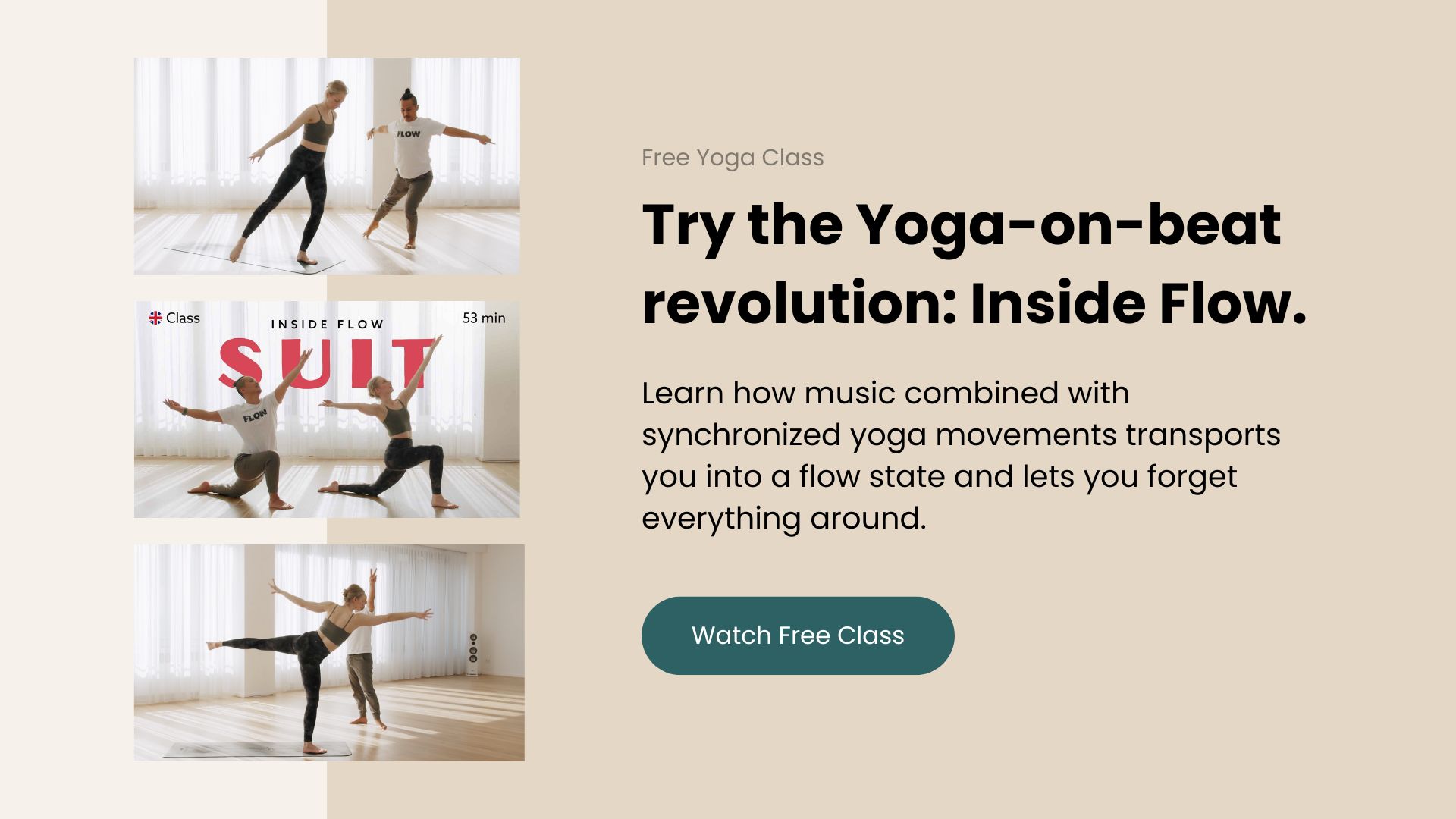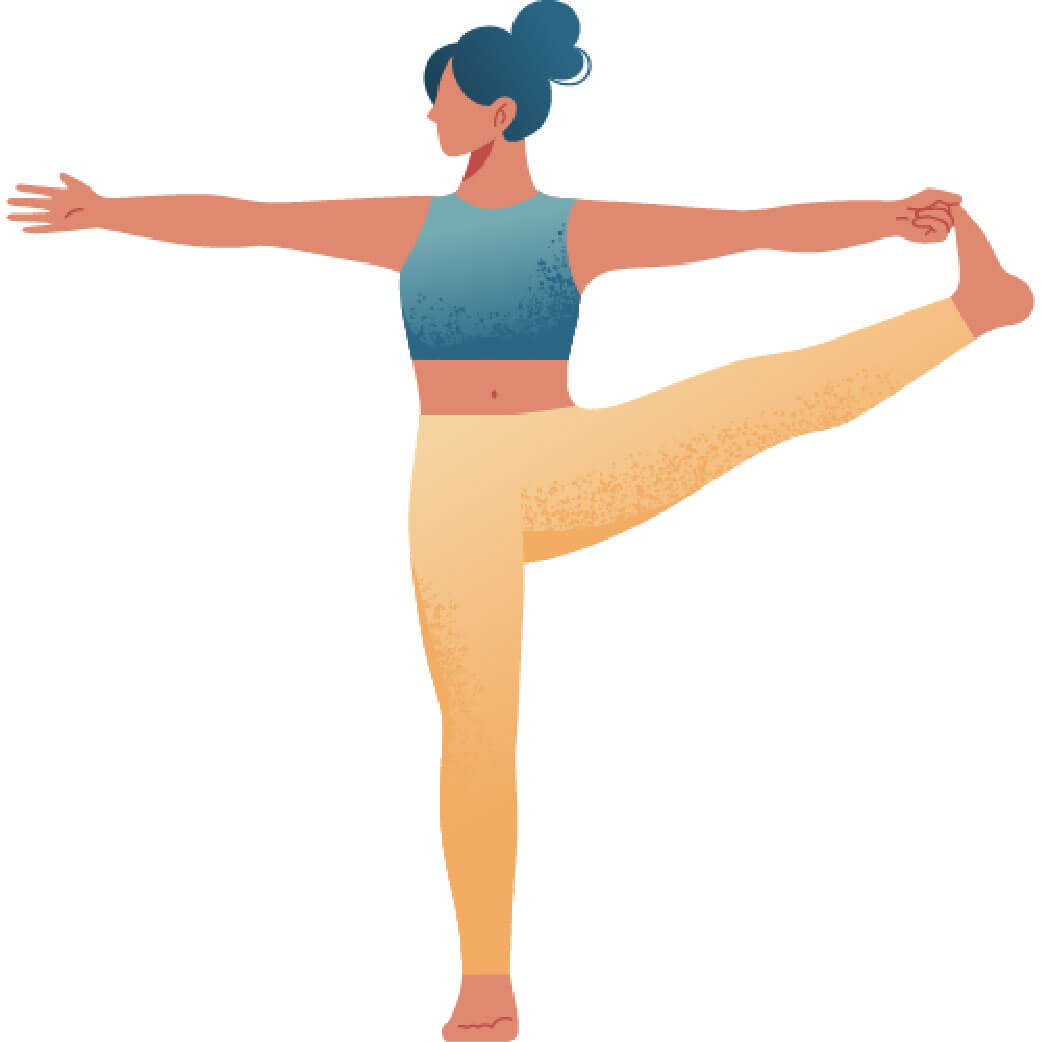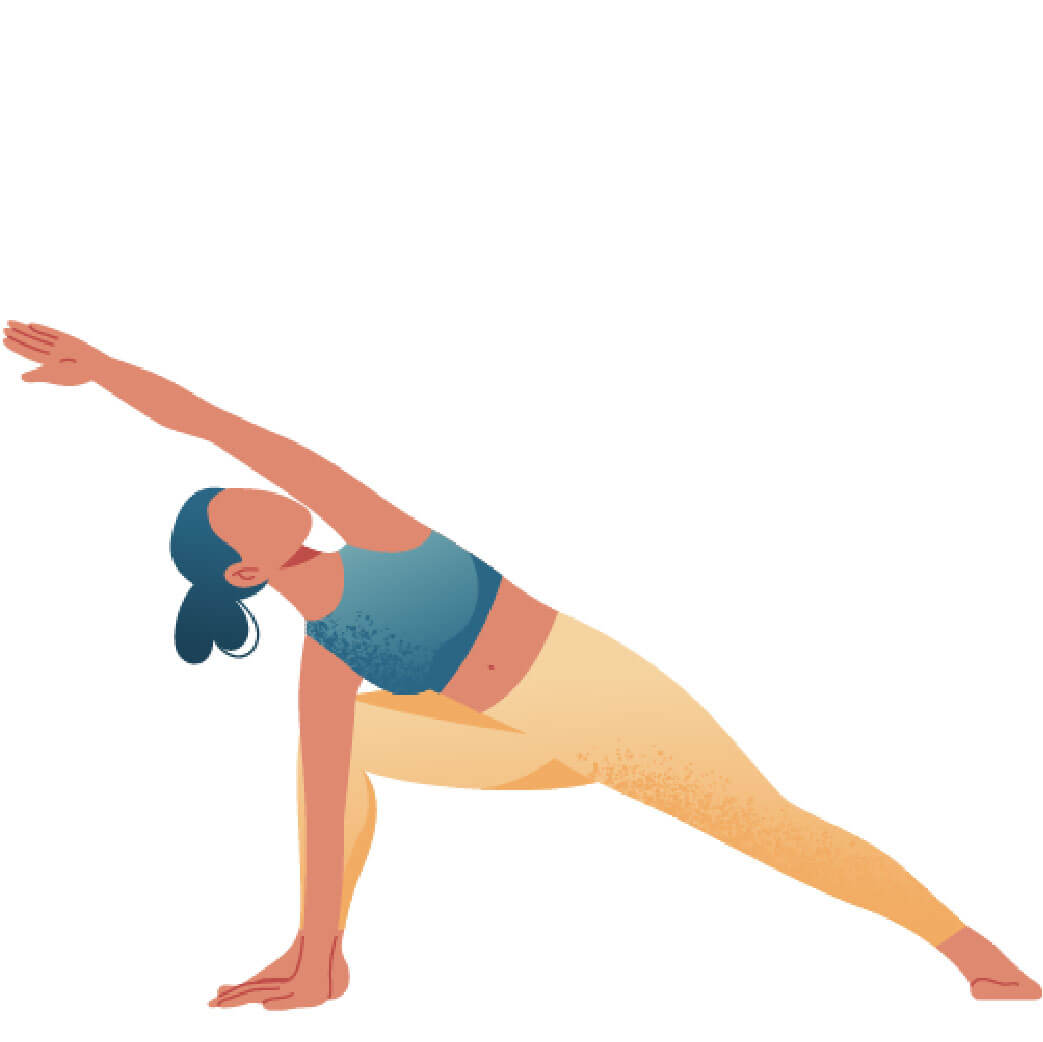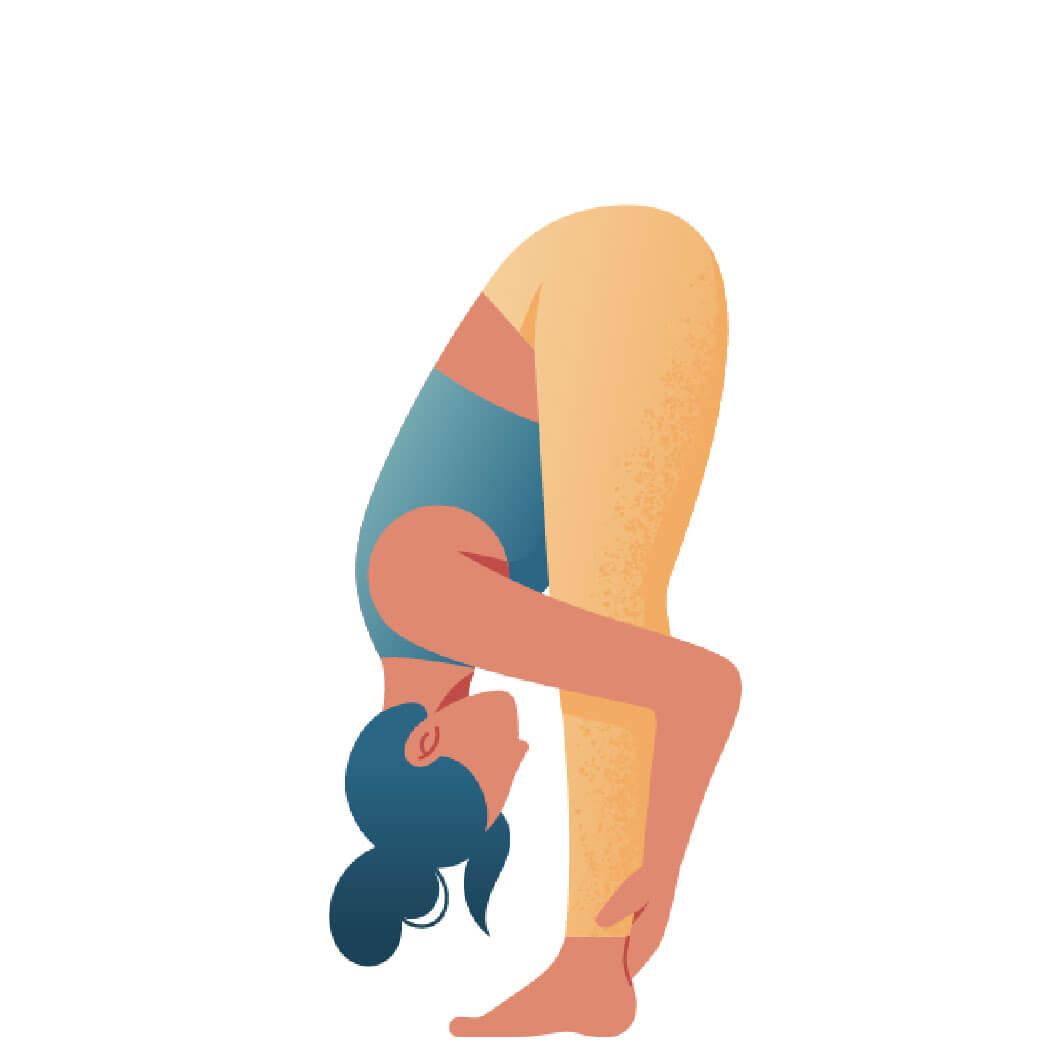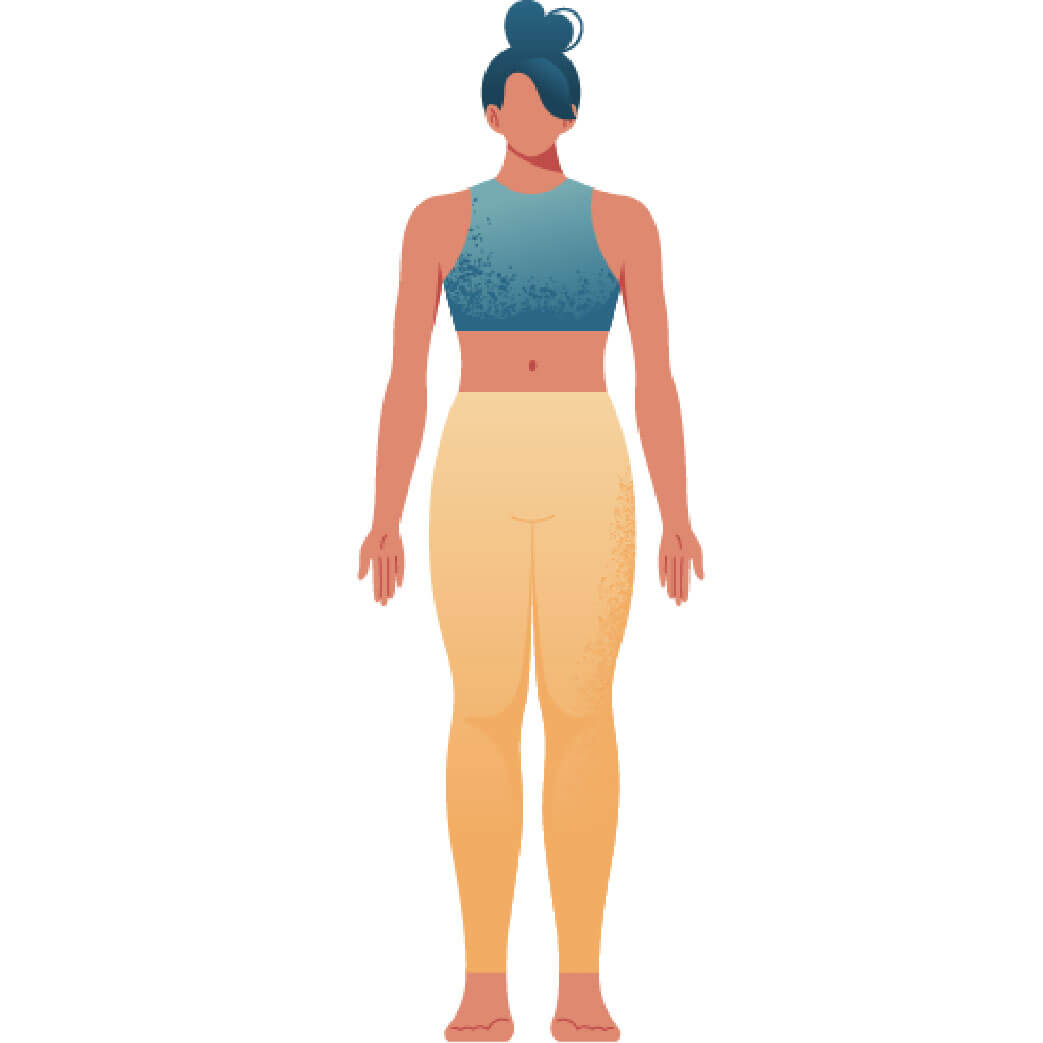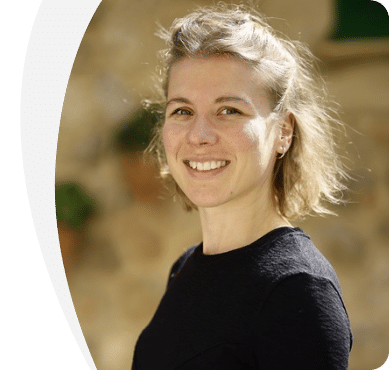
- Sanskrit (Original): Trikoṇāsana
- Etymology: Three (tri); angle (koṇa); pose (āsana)
- Fun Fact about the pose: Can you spot the three angles the pose is named after?
- Asana Type: Standing
- Main length muscle groups: muscles_length_muscle_groups
- Main strength muscle groups: Muscles of the feet, articularis genu, vastii, gracilis, internal and external obliques
- Vinyasa Breath: Exhale


